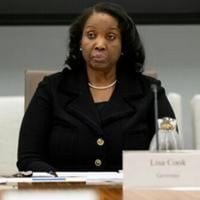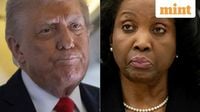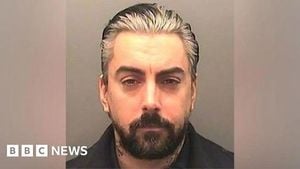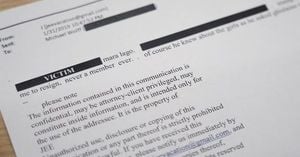In a historic standoff that has sent ripples through financial and political circles alike, the United States Supreme Court announced on Wednesday, October 1, 2025, that it will hear arguments over President Donald Trump’s unprecedented attempt to remove Federal Reserve Governor Lisa Cook from her post. The court’s decision temporarily blocks Cook’s dismissal, ensuring she remains in her role at least until oral arguments are heard in January 2026—a move that has been widely interpreted as a victory for advocates of central bank independence, according to Reuters and AP reports.
The controversy began in late August, when President Trump declared his intention to fire Cook, citing allegations that she had falsified records to obtain favorable mortgage terms before joining the Federal Reserve Board in 2022. Cook, who was appointed by former President Joe Biden and is the first Black woman to serve as a Fed governor, vehemently denies the accusations. Her term is set to run until 2038. Trump’s bid to oust her marks the first time in the Fed’s 112-year history that a sitting president has attempted to fire a governor—a fact that underscores the gravity of the situation, as reported by Reuters.
Cook’s lawyers have been quick to push back against the president’s claims. They argue that the Federal Reserve Act, enacted by Congress in 1913, was designed to shield the central bank from political interference by allowing governors to be removed only “for cause.” While the law does not precisely define what constitutes cause or establish procedures for removal, the intent is clear: to ensure the Fed can operate independently, free from the shifting winds of partisan politics. “She will continue to carry out her sworn duties as a Senate-confirmed Board Governor,” said her attorney, Abbe Lowell, in a statement to AP.
On September 9, US District Judge Jia Cobb ruled that Trump’s allegations—centered on supposed mortgage fraud—likely did not meet the threshold for removal under the Federal Reserve Act. The judge’s order temporarily blocked the president from firing Cook while litigation continues in lower courts. The Trump administration’s subsequent request to put Cobb’s order on hold was denied by the US Court of Appeals for the District of Columbia Circuit on September 15.
The Supreme Court’s brief, unsigned order on October 1 confirmed that Cook would remain in her position until the case is argued in January. The decision did not address the merits of the fraud allegations or whether the president’s stated cause was sufficient, but it did signal the justices’ intent to weigh the broader constitutional and institutional questions at play.
At the heart of the dispute is the balance of power between the executive branch and independent federal agencies. In recent years, the Supreme Court’s conservative majority has issued a series of decisions expanding presidential authority to remove officials from independent agencies. However, the court has also hinted that the Federal Reserve might warrant different treatment, noting its unique structure and tradition as a quasi-private entity with a singular historical role in the US economy. As Reuters pointed out, the court’s eventual ruling could have sweeping implications for the future of central bank independence.
The Trump administration, for its part, has taken an expansive view of presidential powers. In a September 18 filing to the Supreme Court, the Department of Justice argued, “Put simply, the President may reasonably determine that interest rates paid by the American people should not be set by a Governor who appears to have lied about facts material to the interest rates she secured for herself – and refuses to explain the apparent misrepresentations.” Cook, however, has consistently denied any wrongdoing, and documents show she identified her Atlanta condo as both a “vacation home” and a “2nd home” in security forms—details that seem to undercut the fraud allegations, according to AP.
Cook herself has been resolute in the face of mounting political pressure. “I will not be bullied,” she declared, vowing to continue her work as a Senate-confirmed governor. Her next opportunity to cast a vote at the Fed’s interest rate-setting committee is scheduled for October 28-29, 2025—a meeting that will no doubt be watched closely by markets and policymakers alike.
The stakes are high. Trump’s efforts to reshape the Fed board come at a time when he has repeatedly called for the central bank to slash interest rates, a move that economists warn could risk stoking inflation, which is already on the rise. Trump has been openly critical of Fed Chair Jerome Powell, whom he has called a “numbskull,” “incompetent,” and a “stubborn moron,” as reported by Reuters. The president’s push to install like-minded officials on the Fed’s seven-member board is widely seen as an attempt to exert greater influence over monetary policy—something the Fed’s founding principles were designed to prevent.
Cook’s lawyers have argued that allowing Trump to remove her would “eviscerate the Federal Reserve’s longstanding independence, upend financial markets and create a blueprint for future presidents to direct monetary policy based on their political agendas and election calendars.” Their concerns are echoed by a group of 18 former Fed officials, Treasury secretaries, and other top economic figures from both parties—including Janet Yellen, Ben Bernanke, and Alan Greenspan—who filed a brief urging the Supreme Court not to permit Cook’s dismissal. They warned that such a move would threaten the Fed’s independence and erode public confidence in the institution.
The case has also raised broader questions about the role of the courts in protecting independent agencies from political interference. The Supreme Court will not only consider whether Trump had sufficient cause to remove Cook, but also whether federal judges have the authority to block firings outright or can only award back pay to officials who are wrongfully dismissed. The answer could have significant implications for the separation of powers and the stability of American governance.
As the legal battle plays out, the Fed’s ability to set interest rates without regard to the wishes of politicians hangs in the balance. The central bank’s independence is widely regarded as essential to its mission of keeping inflation in check and maintaining economic stability—tasks that become all the more challenging when political pressures mount.
For now, Lisa Cook remains at her post, her fate to be decided in the coming months by the nation’s highest court. The outcome will not only determine her future, but could also redefine the boundaries between the White House and the Federal Reserve for generations to come.





